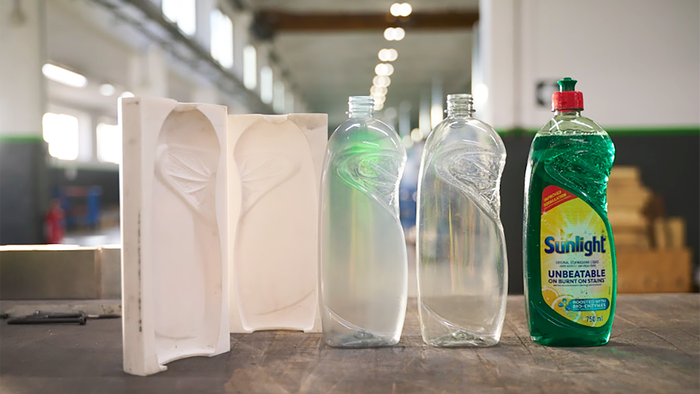5 ‘Chaotic Innovation’ Design Principles for Packaging
Here’s how you can design future-ready packaging for your medical devices that will best leverage the newest technologies and innovations.

At a Glance
- Leverage Enterprise Innovation for better Return on Strategic initiatives and collaborate to address design challenges.
- Implement Additive Design for Layered and Dynamic value, continually improving packaging with evolving technologies.
- Use AI for predictive modeling and design, anticipating lifecycle, material waste reduction, and ergonomic improvements.
The packaging industry has transitioned from a historical state of incremental innovation through a phase of disruptive innovation to our current state of chaotic innovation.
Chaotic innovation is characterized by rapid and significant change. The best packaging designers leverage a range of new design principles and technologies to ensure their packaging aligns with the trajectory of technological and packaging innovation.
These are the five Chaotic Innovation design principles deployed by the world’s best packaging designers.
1. Enterprise Innovation (EI).
Enterprise Innovation (EI) results in a 50% to 60% better Return on Strategic (ROS) initiatives, including the design or redesign of packaging. This approach leverages enterprise and ecosystem collaboration to address design challenges.
For example, your design challenge might be improving the human factors design of your package while removing 30% of material waste. You could brand this challenge as something like “The Pack Hack.” Then build out an Enterprise Social Network (ESN) platform (aka a company intranet) to launch the challenge and watch the amazing ideas come in from your creative employees.
In my practice, we have conducted hundreds of these with astonishing results! Keep in mind you will need to develop an Innovation Pipeline (IP) in advance that quickly evaluates innovations as they come in. I also strongly recommend incentivizing participants and rewarding any innovation that moves to deployment.
2. Additive Design (AD).
Develop a formal strategy around Additive Design. This approach provides Layered and Dynamic value to packaging. “Layered” refers to the fact that the packaging provides users or the channel value beyond simply containing and protecting the product. For example, my iPhone has layered value because it’s far more than a phone; it offers multiple benefits that grow every day as more apps become available.
“Dynamic” value refers to the design continually improving over time. For example, AI algorithms and solutions will become far more sophisticated, and will gain access to a broader range of data. This will result in lower costs, and more sustainable and improved designs in a fraction of the developmental time.
3. Artificial Intelligence (AI) Design Enhancement.
We now have the ability to leverage predictive usage modeling, anticipatory enabling technology models, and other AI models to assist us in building dynamic packages. These packages constantly take advantage of new enabling materials and processes while anticipating important factors.
This includes anticipating product lifecycle, reducing material waste, emerging material technologies, and significant improvements in human factors, ergonomics, and other design enhancements.
4. Smart and Connected Packaging.
If something can be connected, it will be connected. And when it is connected, it will improve the value to the organization and the customer. This is especially true and relevant to the trajectory of change in package design.
Emerging and enabling technologies — including small Passive Radio-Frequency (RF) Sensors, AI-enabled Optical Sensors, and Quick Response (QR) codes — will allow us to develop connection architecture strategies that provide massive improvements in the value delivered through healthcare packaging.
Simple solutions, such as a QR code applied to a package for ophthalmologists for punctal implants for the treatment of ocular surface disease, can provide tremendous value. For example, the office can scan the code to download consent forms, post-procedural information handouts for the patient, and enhanced procedural insights for the provider. This is a simple example of how we will use connection architecture to create layered and dynamic value in medical packaging.
5. Beyond the Voice of The Customer (VOC).
Organizations have relied on fractional VOC methods for decades. However, the best package designers go far beyond VOC, leveraging significantly better insights across the ecosystem to ensure they have the right instructive insights to drive innovation.
Remember, innovation is easy; the hard part is knowing what to invent. In my opinion, VOC alone won’t get you there. While these methods can provide a component of your insights landscape, relying exclusively on VOC to instruct design is a bad idea. We use Ecosystem Design Hackathons, Enterprise Innovation (EI), and Net Customer Experience (NCX) insights to gain superior insights, resulting in far better design outcomes.

The bottom line.
Major improvements in packaging will stem from organizational leaders who are open to leveraging new best practices and emerging technologies. To achieve significant improvements in packaging, we must not allow ourselves to believe that regulations, safety, and compliance prevent innovation. Today, we need to realize that innovation is required to deliver safe, compliant, and satisfactory user experiences and value.
About the Author(s)
You May Also Like


